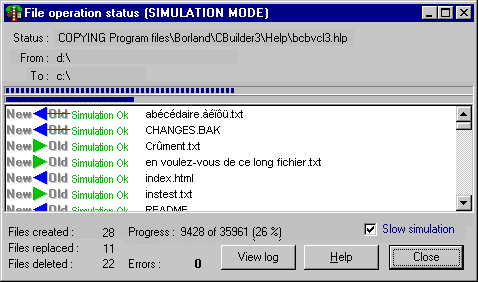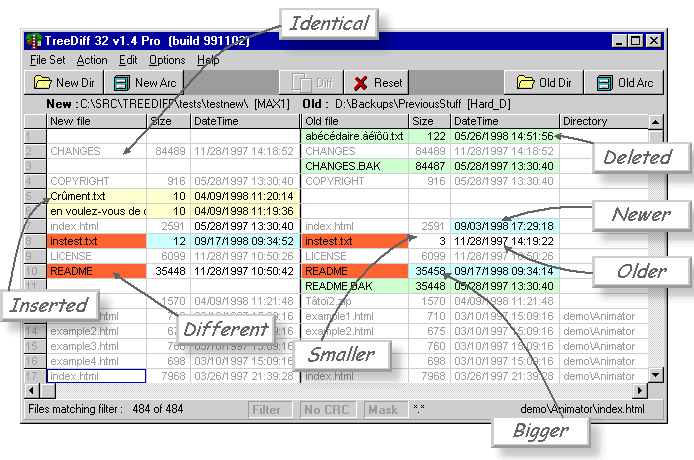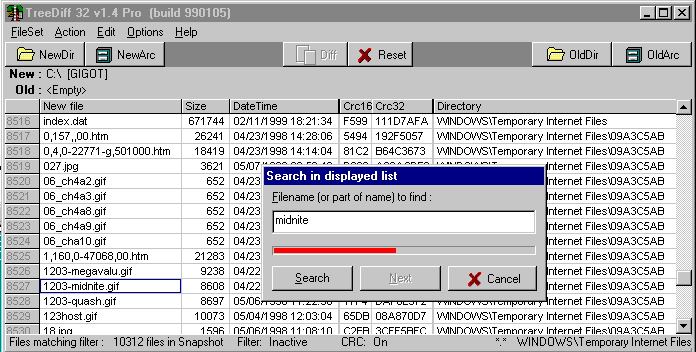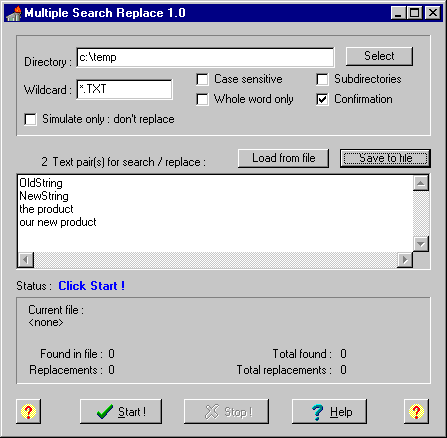
TreeDiff Directory Synchronization dialog :
The red numbers indicates how you must use this dialog. First (1) select a generic
template, which sets a number of default options, then (2) you can fine-tune
the options, then (3) choose on which files to apply the file operation, finally
(4) choose to Simulate or Synchronize these files as desired.
Then, check the Log window to see the results while the file operations are
in progress (next screenshot).

Resulting log window, after a Synchronization or
a File operation was made :
The Arrows indicate the direction of the move, if any. Otherwise, it indicates
from where the file comes from (the Left or Right pane of the main window -
respectively the New and Old set of files).
In this case, the first file has been MOVED from the Old set to the New set.
Index.html has just been COPIED to the New set.
"Simulation mode" was used, so I didn't touch a file on my
disk to take this screenshot.

TreeDiff Main window.
This picture just illustrates how colors are used to show differences.

Here is the display you get after Taking a SNAPSHOT:
For this example I just took a snapshot of my own hard drive, which is named
"GIGOT". It contains about 10,000 files, which is far from the limits
of TreeDiff, which can handle over 260,000,000 files !
See that both the16-bit and 32-bit CRC have been calculated. This way you can
compare this snapshot to any kind of archive (for instance, ZIP, ARJ and JAR
use 32-bit CRC, but ZOO and PAK uses 16-bit CRC).
In this picture, I searched for the string 'midnite'. The found file is selected.
See that the date format includes the century. YES, TreeDiff is "Y2K"
(year 2000) compliant.

Several option page dialog :
File operations includes directory synchronization, but also regular "manual" file operations :

